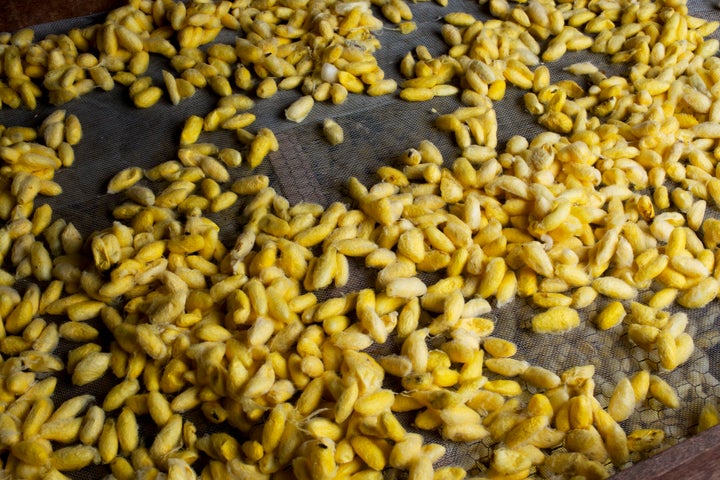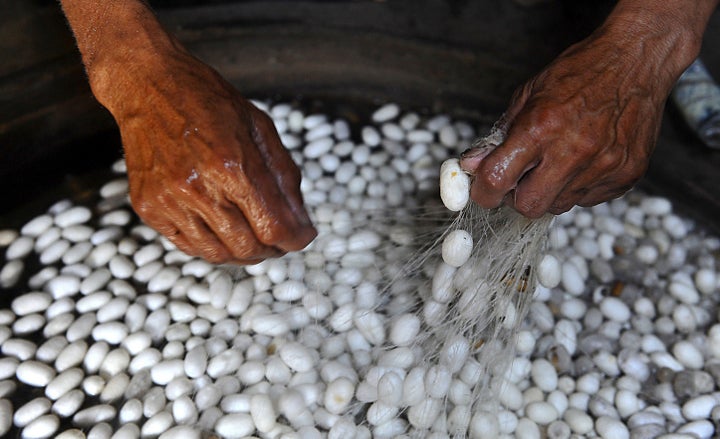
Chances are you’re aware that silk comes from silkworms. They have the word silk in their name, for crying out loud. But did you know that silk ― luxurious, expensive silk ― comes from inside a worm’s mouth?
Yes, that’s right. Silk is produced from a worm’s salivary glands.
Tom Turpin, professor of entomology at Purdue University, explained how it all works to The Huffington Post. “Their glands produce it, it’s extruded out in the salivary gland and when they get ready to pupate, once they are done feeding, then they spin the cocoon,” he said.
Silkworms feed on mulberry leaves for 42 days, after which, Turpin explains, one worm can spin up to “3,000 yards of silk,” all in one strand. That’s why, he said, killing the silkworms is a necessary part of the silk making process.
Yes, killing the silkworms.
“Once the caterpillar is done spinning, it will literally release a chemical that will sort of dissolve the silk so the moth can get out,” he said. “If they extrude the chemical it will dissolve one end, leaving you with 3,000 one-yard pieces of silk rather than one piece of silk 3,000 yards long.”
The silkworms, once fully wrapped in their silk cocoons, are poured into boiling water, which kills the worm and binds the silk together. “You pick off the anchor strands, which are just knots of silk and then you pull out the two lines of silk and start running it around a wheel,” Turpin said.

While Turpin said the boiling water method is commonly used on a small scale for silk-making hobbyists, the practice can also be done by steaming or putting the cocoons in the sun, as a video from Vox explains.
There are, however, ways to produce silk in a more humane way. Aurora Silk, a company that calls itself the “#1 source for eco-friendly, organic, fair-trade, natural dyes and fabrics for over 45 years,” makes “peace silk,” made from empty cocoons. Phoebe Holland, one of the Aurora Silk’s employees, explains that even though the fibers will have come apart from the moth breaking the cocoon, the silk fibers are pulled apart, twisted and spun, rather than reeled, as they are when it is one continuous fiber.
So why wouldn’t more producers go the humane route when it comes to making silk? In part, it comes down to aesthetics. “Reeled silk makes that shimmery satin look and feel you associate with silk, while spun silk is harder,” Holland said.
On the other hand, when asked about people who take issue with killing the worms to get the silk, Turpin said there is “a long range of attitudes people have about these sorts of things,” and that he believes “everyone can believe what they want.”
Whatever your stance on the production, one thing rings true: Silk is way more complex and fascinating than we ever imagined.